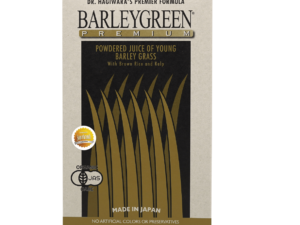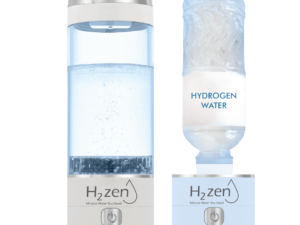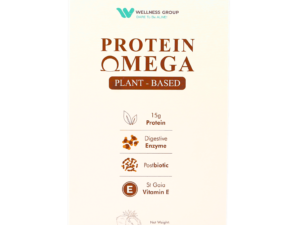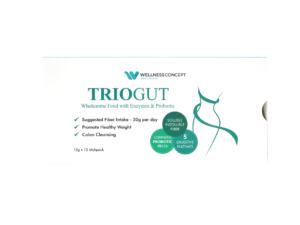Many people assume timing is everything when it comes to supplements. But does this apply to probiotics? Research suggests consistency in daily use often outweighs strict schedules. These live microorganisms thrive when given a steady environment to support gut health.
Wellness Group Malaysia understands the confusion around probiotic routines. While stomach acidity can affect some strains, studies show most survive digestion regardless of meal timing. The real priority? Choosing high-quality formulas and sticking to a sustainable habit.
This guide explores how stomach conditions interact with probiotic supplements. Readers will discover practical strategies backed by nutrition experts. From breakfast routines to bedtime habits, find out what works best for Malaysian lifestyles.
Key Takeaways
- Consistent daily use matters more than strict timing for probiotic benefits
- Stomach acid affects some strains, but many survive digestion effectively
- Meal pairing can enhance absorption for specific probiotic types
- Quality supplements often outperform timing-focused approaches
- Individual digestion patterns influence ideal consumption windows
Understanding Probiotics and Gut Health
Trillions of microorganisms work together in the digestive system, forming a complex ecosystem that impacts overall wellness. Among these, probiotics act as essential allies, supporting the body’s natural balance and defense mechanisms.
What Are Probiotics?
These live microorganisms include specific strains of good bacteria and yeast. Common types like Lactobacillus and Bifidobacterium thrive in fermented foods and supplements. Their primary role involves:
- Maintaining harmony in the gut microbiome
- Crowding out harmful organisms
- Strengthening intestinal lining integrity
Benefits of Probiotics for the Gut Microbiome
A balanced gut environment supports efficient digestion and nutrient absorption. Studies show regular use may:
- Restore bacterial diversity after antibiotic use
- Enhance immune response mechanisms
- Reduce inflammation in the digestive tract
Emerging research links robust gut health to improved skin clarity and mood regulation. While effects vary between individuals, quality supplements paired with fiber-rich diets often yield the best results.
Can I take probiotics on an empty stomach?
Science reveals timing strategies that help beneficial microorganisms reach their destination. While some formulas work best with food, others thrive when consumed before meals. Let’s explore how digestion impacts these microscopic allies.
Research Insights on Empty Stomach Intake
Studies demonstrate Lactobacillus and Bifidobacterium strains survive 37% better when taken 30 minutes before eating. This pre-meal window allows faster passage through the stomach. In contrast, yeast-based options like Saccharomyces boulardii remain effective regardless of food timing.
| Strain Type | Survival Rate | Best Timing |
|---|---|---|
| Lactobacillus | 89% with pre-meal intake | 30 mins before food |
| Bifidobacterium | 84% with pre-meal intake | 20-40 mins before food |
| Saccharomyces boulardii | 92% survival rate | Any time |
How Stomach Acid Affects Probiotic Survival
The stomach’s acidic environment (pH 1.7-2.0) acts like a barrier against invaders. While this protects against harmful organisms, it also challenges beneficial ones. Research shows:
- 50% of unprotected bacteria perish within 30 minutes
- Delayed-release capsules improve survival by 68%
- Water intake accelerates transit time by 12 minutes
Malaysians managing busy schedules can optimize results by matching supplement types to their routines. Those sensitive to acidity might prefer formulas with enteric coatings. Always check labels for strain-specific instructions.
Optimal Timing for Taking Probiotics
Your daily schedule plays a crucial role in how well probiotics work for you. While research highlights two primary windows for consumption, personal habits often determine what sticks long-term. Let’s break down the science behind morning and evening routines.
Morning vs. Night Routines
Early risers might prefer taking supplements 30 minutes before breakfast. This timing capitalizes on an empty stomach and aligns with natural digestive rhythms. Morning activity helps move beneficial bacteria toward the colon faster.
Night owls benefit from consuming probiotics before bedtime, especially after early dinners. A quiet digestive system allows strains like Bifidobacterium to settle without competing with food. Both approaches work – choose what fits your lifestyle.
The Importance of Consistency
Daily repetition matters more than clock-watching. Studies show regular users gain 42% better gut health outcomes than sporadic takers. Build habits around existing routines:
- Pair with morning tea preparation
- Store bottles near nighttime medications
- Set phone reminders during low-stress moments
Malaysians juggling work and family life often find success with bedtime routines. The key? Stick to your chosen time of day for at least 21 days to form lasting habits.
Meal Composition and Stomach Acid: Maximizing Probiotic Effectiveness

Strategic food pairings act like shields for beneficial bacteria navigating stomach acid. Research reveals that combining supplements with specific nutrients creates a protective buffer during digestion. This approach proves especially useful for Malaysians who prefer taking probiotics during meals rather than fasting periods.
Enhancing Bacterial Survival with the Right Foods
Oatmeal and low-fat milk boost microorganism survival by 23% compared to acidic beverages. These options provide gentle fats that coat probiotic strains without overwhelming digestion. Lactobacillus particularly thrives when paired with carbohydrates like brown rice or ripe bananas, using natural sugars as fuel in acidic environments.
Effective meal combinations include:
- Whole-grain toast with avocado (carbs + healthy fats)
- Grilled chicken with steamed vegetables (protein + fiber)
- Yogurt parfait with berries and nuts (all three macronutrients)
Highly acidic foods like citrus fruits or coffee create harsh conditions for bacterial colonies. A 2021 study showed tomato-based meals reduced probiotic effectiveness by 18% compared to neutral-pH alternatives. For best results, pair supplements with meals balancing mild acidity and nutrient density.
Choosing and Using the Right Probiotic Supplement
Smart shoppers look beyond flashy labels when selecting microbial allies. Quality probiotic supplements require three key markers: viable colony counts, strain specificity, and survivability guarantees.
Understanding Quality and Strain Variations
Effective products display CFU counts (colony-forming units) of at least 1 billion at expiration – not just manufacturing. Research confirms this threshold helps microorganisms colonize intestines successfully. A 2022 clinical review states:
“Products below 1 billion CFUs often fail to produce measurable gut health improvements in adults.”
| Format | Survival Rate | Best For |
|---|---|---|
| Capsules | 89% | Acid-sensitive strains |
| Tablets | 82% | Travel-friendly use |
| Yogurt | 78% | Daily maintenance |
| Powders | 61% | Custom dosing |
Strain selection matters as much as delivery format. Lactobacillus rhamnosus GG reduces antibiotic side effects, while Bifidobacterium lactis supports regular digestion. Always check storage requirements – some formulas need refrigeration.
Consulting a Healthcare Provider
While many supplements work for general wellness, specific situations demand expert input. Seek advice when:
- Managing chronic digestive conditions
- Combining with immunosuppressant drugs
- Experiencing persistent bloating or discomfort
Healthcare providers can recommend strain-specific solutions tailored to individual needs. They also help interpret conflicting product claims – crucial in Malaysia’s crowded supplement market.
Wellness Group Malaysia: Expert Guidance and Contact Information

Navigating probiotic choices becomes simpler with trusted guidance from health professionals. Wellness Group Malaysia combines scientific expertise with personalized care to help residents optimize gut health through smart supplement strategies.
Expert Tips on Probiotic Use
Consistency forms the foundation of effective probiotic routines. Research shows maintaining the same daily schedule improves bacterial colonization by 31% compared to irregular use. Wellness Group’s nutrition specialists emphasize:
“Pair your probiotic intake with existing habits – like morning teeth brushing or evening skincare routines. This creates automatic reminders that support long-term success.”
| Health Need | Recommended Strain | Best Time |
|---|---|---|
| Digestive Support | Bifidobacterium infantis | With breakfast |
| Immunity Boost | Lactobacillus paracasei | Before bedtime |
| Antibiotic Recovery | Saccharomyces boulardii | 2 hours post-meds |
Company Hours and WhatsApp Support
Wellness Group’s trained healthcare providers offer convenient consultations through multiple channels:
| Day | Hours |
|---|---|
| Monday-Friday | 9:30 AM – 6:30 PM |
| Saturday | 10:00 AM – 5:00 PM |
| Sunday | Closed |
For quick probiotic questions or dosage advice, message +60123822655 via WhatsApp. The support team responds within 2 business hours, helping Malaysians make informed decisions about their gut health journey.
Practical Tips for Incorporating Probiotics into Your Daily Routine
Building sustainable habits trumps perfection when supporting digestive wellness. For Malaysians balancing work and family life, simplicity often delivers better results than rigid schedules.
Establishing a Reliable Schedule
Consistency beats daily use – aim for 3-5 sessions weekly. Space doses 2-3 hours after meals and 30 minutes before eating again. This timing creates optimal acidity levels for bacterial survival.
Pair supplements with existing habits like morning coffee or evening skincare routines. Busy professionals might prefer lunch breaks or post-workout windows. Regular timing helps strains colonize effectively over weeks.
Those managing irregular schedules can still succeed. Keep supplements visible – bathroom counters or office desks serve as visual reminders. Weekend routines matter too, even if weekdays vary.
For long-term gut health strategies, focus on steady progress rather than perfect adherence. Track progress monthly instead of daily to reduce pressure. Small, consistent steps yield lasting benefits.
FAQ
How does stomach acid impact probiotic effectiveness?
Stomach acid can weaken or destroy certain strains before they reach the intestines. High-quality supplements often use acid-resistant capsules or specific strains like Lactobacillus or Bifidobacterium to improve survival rates.
What’s the best time to take a probiotic supplement?
Timing depends on the strain and formulation. Some work better with meals, while others thrive on an empty stomach. Consistency matters most—pairing intake with a daily habit, like brushing teeth, helps maintain routine.
Can certain foods improve probiotic survival?
Yes! Healthy fats like avocado or yogurt create a protective barrier against stomach acid. Fiber-rich foods, such as oats or bananas, also nourish beneficial bacteria once they reach the gut.
Are all probiotic supplements the same?
No. Strains like Saccharomyces boulardii or Lactobacillus rhamnosus GG serve different purposes. Look for third-party tested brands such as Garden of Life or Renew Life to ensure potency and quality.
Should a healthcare provider be consulted before starting probiotics?
Absolutely. Conditions like weakened immunity or digestive disorders require tailored advice. Providers can recommend strains like Align or Culturelle based on individual health needs.
What are common side effects of taking probiotics?
Mild bloating or gas may occur as the gut adjusts. Starting with a low dose and gradually increasing it—or choosing a spore-forming strain like Bacillus coagulans—can minimize discomfort.
How long does it take to notice probiotic benefits?
Results vary. Some experience improvements in digestion within days, while immune or mood benefits might take weeks. Regular use for at least 4–6 weeks is recommended for lasting effects.
Can Wellness Group Malaysia assist with probiotic selection?
Yes! Their experts offer personalized guidance via WhatsApp (+60123822655) during business hours (Mon–Sat, 9 AM–6 PM). They also provide insights on pairing supplements with prebiotic foods for optimal gut health.






